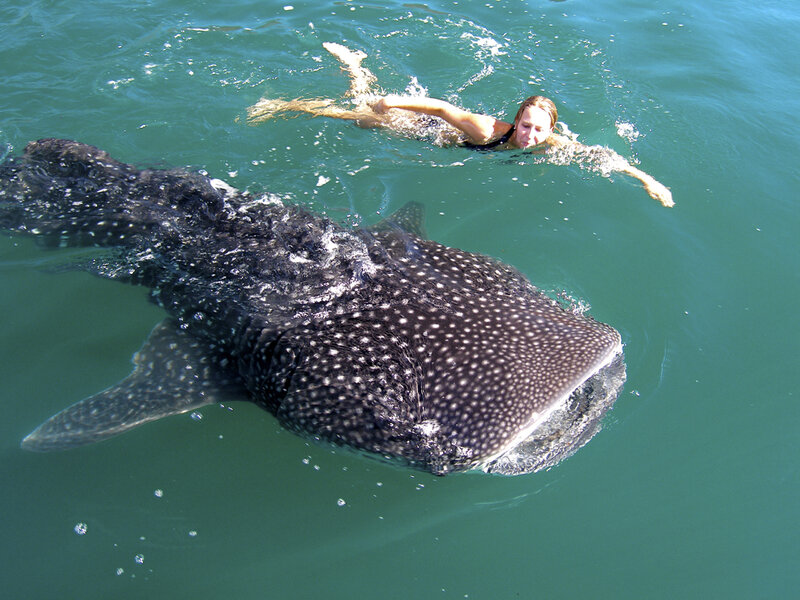Why large animals face a double (or triple) jeopardy
Loading...
In the courtroom, double jeopardy means holding two trials for the same crime.
In the natural world, wild animals face a double jeopardy of their own, argue marine ecologists Loren McClenachan, Andrew Cooper, and Nicholas Dulvy in their study published Thursday in the journal Current Biology.
“A combination of social and biological factors create an extreme risk of extinction,” Dr. McClenachan tells The Monitor in a phone interview Wednesday.
Because large animals typically take longer to grow and mature than small creatures, they can be hunted at a faster rate than they can reproduce. And species traded for nonperishable parts, like tusks or dried fins, are in greater danger than species sought healthy and alive.
Because nonperishable products can be stockpiled by globally distributed black market networks, it is far more difficult to monitor poachers and break up their long and diffuse supply chains.
This stymies efforts to identify the hunted populations and develop effective conservation strategies, explain the authors in their paper.
By contrast, “animals traded for zoos and aquaria tend to be individually identified, subject to tighter control, and at lower risk of extinction than other species.”
Thus, large-bodied animals whose body parts – including shark fins, rhino horns, and elephant tusks – are traded in international luxury markets, face a double jeopardy: They have a biological factor and a social factor speeding up their rate of extinction.
Some of these animals, like sharks and rays, face a triple jeopardy due to their marine habitat. Whale sharks, for example, hit this sweet spot.
"Marine animals are not benefiting [from conservation efforts] the same way these terrestrial species have been," McClenachan tells the Monitor. “That’s the surprising thing. There are things we think are protecting species on land that don’t hold true in the ocean.”
Not only do marine animals like sharks and rays have a greater risk of extinction, but they also get the short end of the stick when it comes to conservation efforts.
“If you look at trade reports, conservation priority is assigned based on price per kilo,” Dr. Dulvy, co-author of the study, tells the Monitor. “This will list tigers first because their penis is worth the most per kilo. So by the time you see a shark fin at the bottom of the list, you’ll think we need to focus on terrestrial animals because their bits are worth a lot more money.”
But ranking conservation priority this way misses the mark, says Dulvy.
“Terrestrial organisms' products are small, so if we are prioritizing by the kilo, tigers and bears will get high priority and sharks will get low priority. But if you look at the whole animal value, sharks are right up there with leopards, tigers and rhinos. Instead we should look at [conservation priority] in terms of price per animal. The reality is that hunters kill animals – they are not thinking about the price per kilo.”
And conservation for marine mammals is “a completely different ball game,” says McClenachan.
For example, conservationists typically assume that extinction risk is a function of limited range size. In other words, animals with larger habitats have lower risks because each animal has a higher potential of being protected somewhere.
“But this doesn’t hold true for marine mammals,” explains McClenachan.
“Large ranges might actually be detrimental for survival of marine species, it makes it even more difficult to coordinate international efforts in the ocean," says the biologist. "The big message here today – on World Ocean Day – is that we really need to play catch up in the ocean.”








